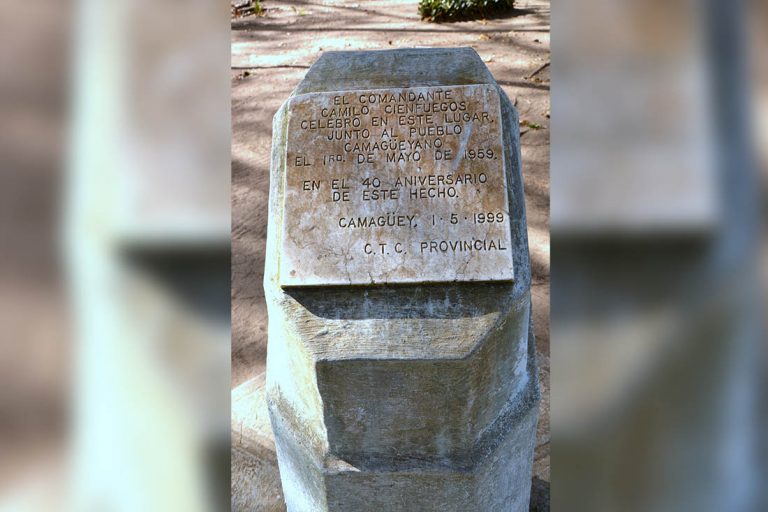By: Ricardo Muñoz Gutiérrez
In 1891, working sectors of the city of Puerto Príncipe and other Cuban cities proposed to organize the celebration of May 1st, since two years earlier, the II Congress of the International had agreed that on these dates strikes and demonstrations would be held in all countries, cities and towns of the world for the 8-hour work day and other demands
On April 23rd, 1891, El Pueblo newspaper published an Editorial protesting the Edict issued by the Captain General of the Island of Cuba, and reproduced by the Civil Governor of Camagüey, because in one of the articles it was said: “The demonstrations on the public highway on May 1st”. The press alleged that a Royal Decree and Spanish laws guaranteed the right to public meetings and only another Law could deprive the citizens of the colony of the possibility of demonstrating.
Days later it was reported that the Central Board of Artisans of this city, in agreement with other unions, had agreed to celebrate the May 1st festival with a General Assembly of Workers in the Main Theater. The workers, in order to outwit the Bando and be able to carry out their act, decided to carry it out in a large and closed place and not on public roads, as the spurious Bando said.
The assembly
The day after the International Workers’ Day, the same newspaper published an article entitled “Workers’ Assembly”:
“…before a large audience in which the worker element of Camagüey was represented with dignity, the Assembly began in our Main Coliseum… in commemoration of the date chosen by the workers of the entire world to protest the impositions of Capital.”
In the act chaired by the members of the Central Board and by the enthusiastic propagandist Liborio Vega, the director of the “Voice of the Worker”, the presidents of the Bricklayers, Tailors and Carpenters Guilds and two workers spoke.
The last to speak was the President of the Central Board, who clearly explained the purposes and tendencies of the Camagüey workers, congratulating himself on the good order observed in that Assembly, which he considered as the most unanimous and enthusiastic demonstration of all that have been held up to now in this city.
He described the “… picture of misery that makes the worker succumb, victim of hunger, cold, precisely next to the sumptuous and regal palace where those caressed by nature live, the monopolizers of the most necessary articles of consumption.”
He ended up recommending the greatest effort to achieve the association of the working woman.
The other speeches all agreed on the main point: the propagation of the socialist doctrine, considered by the modern proletariat as the only one capable of guaranteeing its future well-being.
The date
Since this year and for more than half a century, for the workers of Cuba and Camagüey, the date of May 1st was an occasion to demand respect for their rights as citizens, demand economic-social improvements, denounce the alliances of governments with capital and even denounce imperialist rule.
The triumph of January 1959, the measures of the Revolution and the understanding of the people about the good behavior of the government headed by Fidel, make it possible to commemorate the date; but, with another nuance. For the workers, farmers and the people in general, May 1st, 1959 is a moment to demonstrate the unity that is being forged, together with the government, for a new Cuba, which went beyond the particular interests of certain worker sectors; that was what happened in Camagüey.
In the city there is a town parade through the streets and an act in the Casino Campestre headed, both by Commander Camilo Cienfuegos. At the beginning of the act, remember that the military chief of the Province is Hubert Matos, Camilo realizes that the representatives of the Socialist Party have been excluded from the list of speakers and proposes that they should be included, because if the communists are not there, then there is no unity.
Camilo’s imprint
In the summary of the massive ceremony, Camilo clarifies interpretations made to his letter to Fidel from the previous year about the passage of the invading column through Camagüey, recognizes the revolutionary performance of the people of Camagüey and, especially, that of Alfredo Álvarez Mola, Alfredito .
In addition, knowing and identifying with Fidel’s revolutionary project, which goes beyond simple changes in the country and the confrontation that is coming with the internal and external enemies of the Revolution, he refers to the necessary unity of the people for the defense of the Revolution: “The workers want military training and we will give those workers military training.”
References:
-Gálvez, William: camilo señor de la vanguardia. Editorial de Ciencias Sociales, La Habana, 1979. p. 415.
-Marrero de la Vega, Abel: “La primera vez que se celebró en Camagüey el Primero de Mayo”. En Adelante, 1º de mayo de 1979.
Translated by: Aileen Álvarez García






